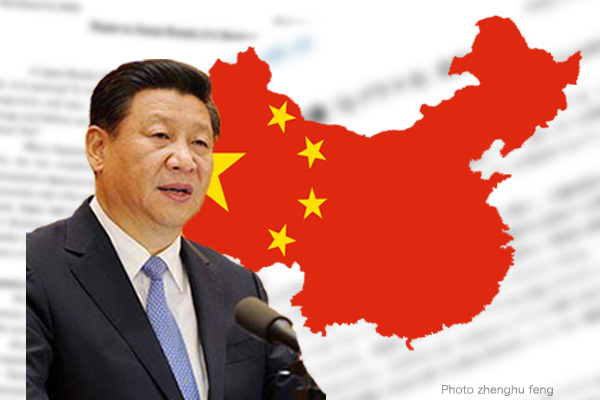On October 17, Chinese Communist Party General Secretary Xi Jinping, who doubles as president and chairman of the Central Military Commission, inspected a brigade of the People’s Liberation Army Rocket Force. At that time, he instructed the brigade to “strengthen training on new equipment, new skills, and new tactics focused on targets.” The released video footage of the inspection confirmed the deployment of new kind of ballistic missiles, which Xi called “new equipment.”
While the name of the brigade inspected by Xi has not been reported, the footage from China Central Television indicates it is the 611th missile brigade located in Anhui Province. During his visit, Xi was briefed in front of a model of a nuclear-capable DF-21A medium range ballistic missile in the brigade’s history archive room, suggesting that the brigade was once equipped with DF-21As.
Guam Killer adopted for intimidation against Japan
The DF-21A has a range of about 2,000 kilometers and can cover western Japan if launched from the vicinity of the brigade location and the entire Japanese main island of Honshu if launched from the coast. This means that the brigade might have once been a unit in charge of nuclear intimidation against Japan.
After visiting the historical archive room, Xi was greeted by DF-26 intermediate-range ballistic missiles lined up in the parking lot. The footage showed 25 DF-26s, indicating that the brigade has replaced DF-21As with DF-26s. The DF-26 has a range of about 3000 to 4000 kilometers. It has been called “Guam Killer” because it can reach the U.S. military base in Guam from China.
The deployment of the DF-26 that can reach Guam is intended to strengthen deterrence against the United States, which has begun deploying intermediate-range missiles in the Indo-Pacific region. Reports on Xi’s inspection of the DF-26 brigade may mean a warning against the U.S.
The DF-26 can be loaded with three types of warheads: a nuclear warhead, an anti-ground conventional warhead, and an anti-ship conventional warhead. The video footage showed two slightly different warhead shapes. Given that the brigade had been armed with nuclear missiles, it is likely to operate nuclear missiles. The brigade may be operating both nuclear and anti-ground conventional warheads. If two types of warheads are used, it may be difficult for those being attacked to determine which warhead is used, risking delayed responses.
Growing nuclear threats
A big question for Japan is to which unit the task of nuclear intimidation against Japan has been transferred. Given missile ranges, the task may have been transferred to an inland DF-26 unit or a coastal unit armed with the DF-17 medium-range ballistic missiles capable of carrying a hypersonic glide vehicle (HGV).
If a DF-26 unit were tasked with the mission, China’s nuclear attack capabilities against Japan might have increased substantially from a level for a DF-21A unit due to the increased number of missiles and their improved performance. Although it is currently unknown whether the DF-17 can carry a nuclear warhead, a missile loaded with a nuclear HGV warhead will be difficult to intercept, posing much greater threats to Japan. In the future, we would need to monitor the movements of the PLA Rocket Force more widely and deeply to assess Chinese threats to Japan.
Maki Nakagawa is a researcher at the Japan Institute for National Fundamentals and former Commander of Basic Intelligence Unit, Japan Ground Self-Defense Force.


